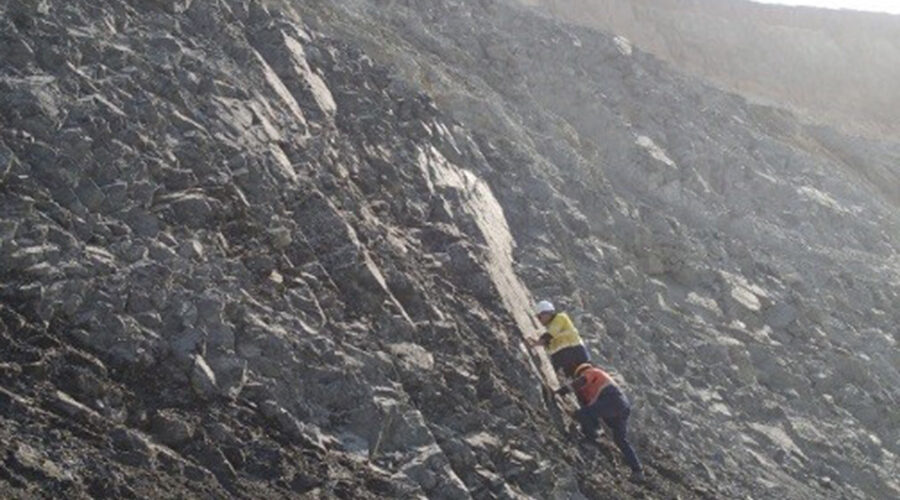In 2017, Kaz Minerals PLC retained BGP to provide alteration geology training, infrared spectroscopy (IRS) data collection, analysis, and 3D modelling for its Bozshakol Cu-Mo porphyry deposit in central Kazakhstan. The key objective was to train Kaz Minerals mine geologists and technicians in the best practice methods to describe and interpret hydrothermal alteration from drill core and open pit faces and to understand the relationships between alteration minerals, breccias, and faults.
Using classroom style lectures and exercises and hands-on descriptions of selected boreholes and pit face exposures, EI trained the technicians and geologists to collect IRS data from drill core samples and from reverse circulation chip trays using a transportable IRS spectrometer, and to process and analyse the infrared spectral data using IRS and 3D modelling software. Field-based training included describing and conducting graphic logging of alteration, veins, porphyry intrusions, breccias and interpreting their cross-cutting relations in selected boreholes, and describing and measuring faults with a compass in pit faces.
EI then conducted debriefing sessions to review the geological observations and to ensure that the entire geology team was aware of new findings.
In 2020, BGP convened a group of four geological consultants experienced in alteration and spectral geology to conduct a two-day review of the alteration 3D model and IRS database, with particular emphasis on identifying the potential uses for the alteration 3D model in future geometallurgical, geotechnical, and exploration work and proposed techniques to improve and advance the IRS survey.


